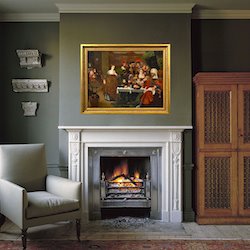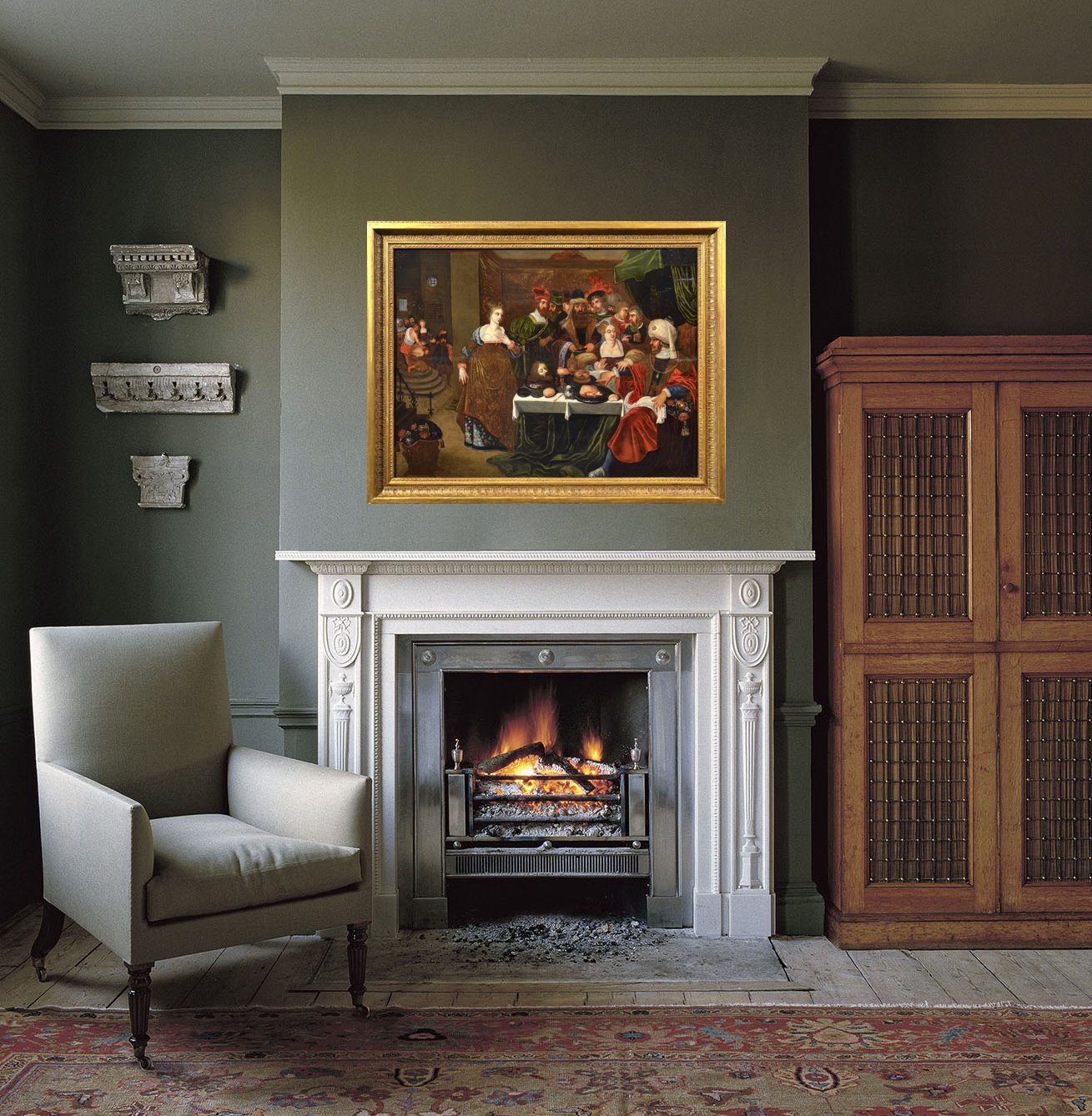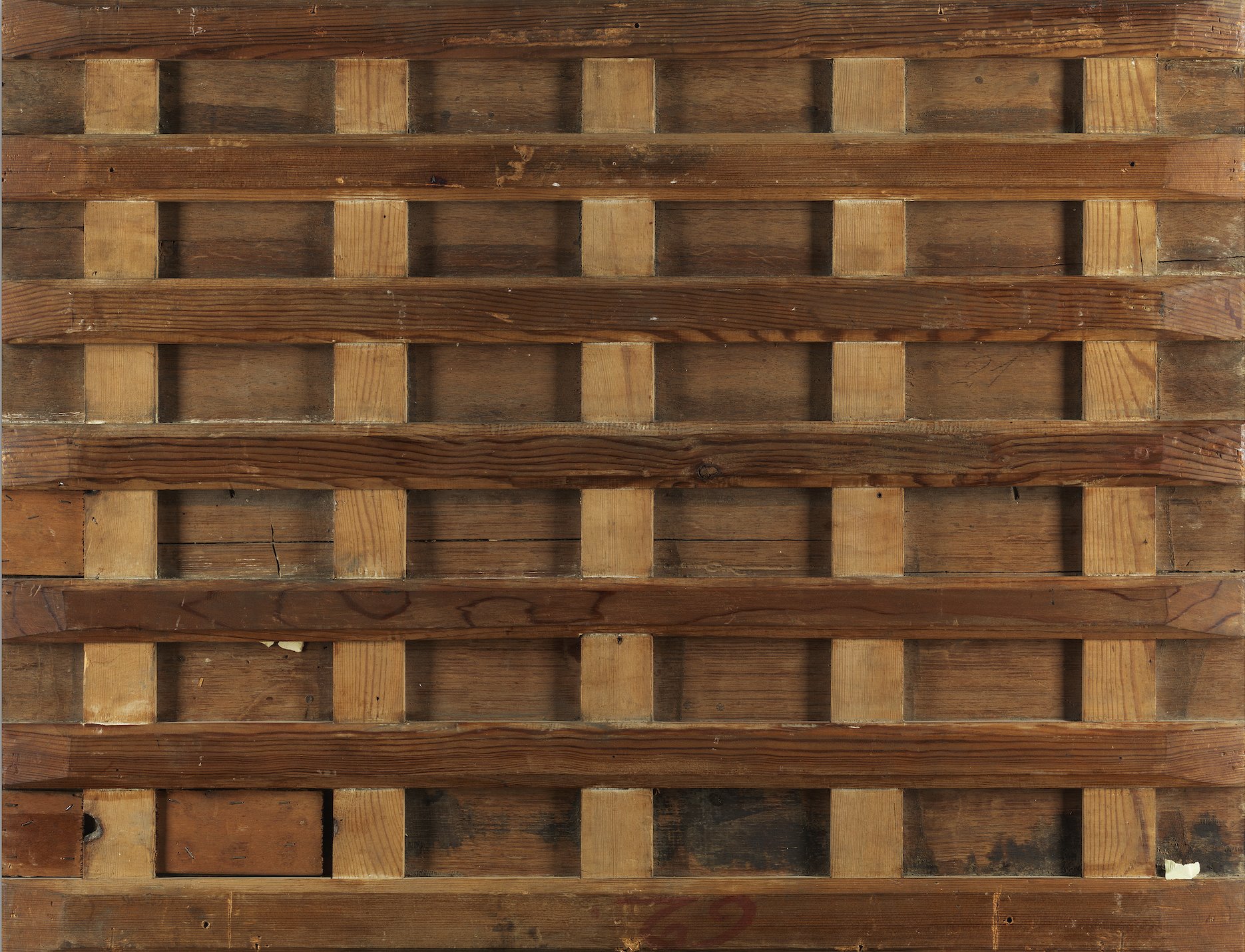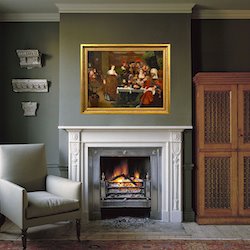Il banchetto di Erode
Gaspar van den Hoecke (Anversa, 1585 – 1648)
Gaspar van den Hoecke (Antwerp, 1585 - 1648)
Herod's banquet
Early 17th century
oil on panel, with gold highlights (in the guise of Salome and in the curtains of the building in the background)
56 x 80 cm.
framed 72 x 90 cm.


Note: The painting probably dates from an original by Frans II Francken (1581 - 1642), which is shown in the RKD archive (https://rkd.nl/en/explore/images/record?query=0000344789&start=0).
Valuable oil painting on panel depicting King Herod and the beautiful Jewish princess Salome according to the episode taken from the Gospel of Matthew (14.3-11), which sees her as the protagonist in the story of the martyrdom of John the Baptist. The event shown is a cross between history and legend, a myth faced for centuries by artists in every field: Caravaggio in painting, Oscar Wilde in theater, Richard Strauss in music. In the artistic model, Salome, an unconscious young instrument of revenge of her mother, becomes the symbol of her most devastating and morbid lust.
On the occasion of King Herod's birthday, Salome, the attractive daughter of Herodias who loved her, performed a seductive dance for the pleasure of the diners. Her dance was so well received that Herod promised to give her whatever she wanted as a reward, even part of her reign if she wanted.
The young woman went to her mother to ask for her advice, and Herodias moved by a grudge against John the Baptist, ordered her to request the head of the Saint on a plate. Salome, an unaware victim of the wishes of her mother, becomes the interpreter of the murder of the Saint, obtained with skill and cunning, and during her banquet he presents her head as if it were a trophy on a silver tray. We see the King reacting with disdain to this situation, while the two women appear indifferent to the consequences of their gesture, standing at the other end of the table in a gold-colored dress and a wide neckline.
In the background, on the left, the event that precedes the main representation is represented in optical synchronism, that is the martyrdom and beheading of the Baptist, which takes place inside a barren prison with barred windows, in clear contrast to the situation of opulence in the first Iano.
The splendid painting, given the pictorial quality, is attributable to the workshop of the painter Gaspar van den Hoecke (1585 - 1648)), one of the greatest masters of the early Flemish Baroque in Antwerp, whose works are strongly influenced by Frans Francken's pictorial influence, artist of reference for the southern Dutch school, and with whom they have often been confused for the clear stylistic similarity. See for comparison the two works by van den Hoeche:
- 'The Parable of the Rich Man (Dives) and Lazarus' (https://it.wikipedia.org/wiki/File:Gaspar_van_den_Hoecke_%E2%80%93_Lazarus_and_the_Rich_Man%27s_Tabl...)
- Il Banchetto di Baltassar, New York, Sotheby's, 24.01.08, lot 210 (https://www.sothebys.com/en/auctions/ecatalogue/2008/important-old-master-paintings-including-europe...)
As we can see, his paintings, dominated by figures treated with extreme care and cloaked in dresses of large and pompous volumes, are rendered with an intense chromatic splendor and characterized by a refinement in the choice of pigments typical of the high-level Flemish school. The studied gestures of the actors and their intense mimicry are proponents of the strong narrative tension that transpires from the table and are rendered with extreme realism and definition.
The table is in excellent condition and does not show any particular restorations upon analysis of Wood's lamp. Frame in gilded wood, not coeval.
For more information, please contact us.
Painting accompanied by a certificate of photographic authenticity in accordance with the law.




